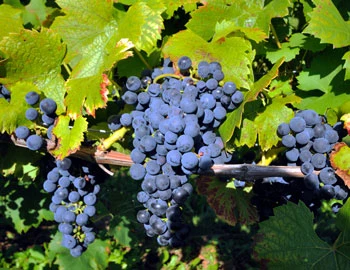
Nicolas Feuillatte Palmes d'Or brut 2008
AOC Champagne, 750 ml

| Grape variety: | Chardonnay, Pinot noir |
| Producer: | Nicolas Feuillatte |
| Origin: | France / Champagne |
| Other vintages: |
Description
The showpiece from the house of Nicolas Feuillatte. Almond blossoms, lilies and a delicate scent of vineyard peach, quince, vanilla, white chocolate, honey brittle and wet stone define its bouquet. After aeration, notes of pepper, ginger, ripe pineapple and mirabelle are revealed. On the palate, the mousse is very soft. The animating juiciness accompanies mineral and salty notes, pineapple, wild berries, coffee, marron glacé and fine yeast pastries in alternation. Despite its distinctive structure, the champagne is very balanced. Plenty of everything, but not too much. With a great length, this prestige champagne offers unique pleasure. Enjoy this majestic champagne from a large glass!
Our head sommelier Marc Almert about the Nicolas Feuillatte Palmes d'Or Brut
2008 was an outstanding year for champagne! Such desirable weather conditions only come about once or twice per decade in the Champagne region. Many champagne producers have accordingly taken their time to allow the product to mature in the bottle before launching their prestige cuvée onto the market. The same applies to Nicolas Feuillatte and their elite cuvée of Pinot Noir and Chardonnay; it wasn't until the summer of 2021 that I was able to uncork the very first bottle on Swiss soil, in the picturesque setting of the Lenk Valley. And I was captivated on the spot, the experience was well worth the wait: the bouquet is very dense, complex and spicy, followed up by fresh apple on the palate, a slight note of nougat with an invigorating tartness and an extremely long finish. It's already a poetic accompaniment to many dishes, but is also definitely a champagne with a great deal of potential for laying down!
Celebrate the Art of Sabring!

With its elegant design, this champagne sabre is not only an impressive eye-catcher at any celebration and an indispensable tool for stylish sabering, but also the perfect gift for all passionate sparkling wine lovers.
Attributes
| Origin: | France / Champagne |
| Grape variety: | Chardonnay, Pinot noir |
| Ripening potential: | 6 to 20 years |
| Drinking temperature: | 10 to 12 °C |
| Food Pairing: | Apéro riche, Fruit tart, Whole baked fish, Roast veal with morel sauce, Coquilles Saint Jacques on lentils, Mussels au gratin |
| Vinification: | pressing the whole grape, fermentation in steel tank |
| Harvest: | hand-picking, strict selection |
| Maturation: | in steel tank, on the yeast |
| Volume: | 12.5 % |
| Note: | Contains sulphites |
Nicolas Feuillatte
Nicolas Feuillatte, a visionary and gifted entrepreneur, presented his Champagne for the first time in 1976. It quickly became the trendy brand in jet-setter circles in the USA, Australia and England, circles which Nicolas Feuillatte regularly frequented. In just 30 years, Nicolas Feuillatte rose to become the No. 1 Champagne brand in France.
Behind the brand lie numerous wine growers and their families, lovingly tending their vineyards with the experience of generations to obtain the best quality grapes for the harvest. They are organised within the Centre Vinicole de la Champagne, the most important wine growers’ association in Champagne. The vineyards include 13 invaluable Grand Cru and 33 1er Cru areas, the basis for exclusive and prestigious top cuvées such as Palmes d'Or Brut and Palmes d'Or Rosé. In order to ensure flawless quality, the grapes – regardless of origin – are pressed immediately after harvesting in on-site presses in the vineyards themselves.

Pinot noir
Blueprint of the terroir
No other variety expresses its terroir as precisely as Pinot noir. It is a sensitive, fragile grape. But when it succeeds, it gives the world some of its very greatest wine plants. It especially excels in Burgundy, where it has been cultivated for at least 700 years. Even in the middle ages, it was considered so precious that it was kept separate from other grapes so as to not diminish its value. The finest examples are delicate and fragrant with aromas of cherries and red berries. With maturity, notes of forest floor, leather and truffles enter as well. An irresistible fruity sweetness still shines through, even after several decades. The Pinot noir does well in cool locations: in Switzerland and in Germany, where it is known as Blauburgunder and Spätburgunder respectively; in Alsace and in South Tyrol, in Oregon, New Zealand and Tasmania. Not least, it yields fantastic champagnes. It is a wonderful culinary companion. With its soft tannins and charming bouquet, it meshes with everything, from Güggeli and cheeses to fried fish.

Chardonnay
King or beggar?
Hardly any variety of vine shows such a broad spectrum of quality as the Chardonnay. Its wines range from faceless neutrality to breath-taking class. It is an extremely low-maintenance vine, which explains why it is grown around the world – even in places where it probably should not be. The aromas of the Chardonnay variety are not very pronounced: a bit of green apple, a little hazelnut; in warmer latitudes, also melon and exotic fruits. The wines are often defined by maturing in casks. They develop more or less subtle notes of butter, toasted bread and vanilla. The grapes achieve their highest expression in their region of origin, Burgundy. Its heart beats in the Côte de Beaune: one might think of the plant growth of Meursault or Puligny-Montrachet. With their finesse and complexity, they can survive for decades. Chardonnay also achieves first class in some Blanc-de-Blancs champagnes. It additionally yields great wines in the Burgundian Chablis, and increasingly in Australia and Chile. A simple rule of thumb for pairing with food: When butter and cream are involved, you cannot go wrong with Chardonnay.

France
France – Philosophy in a bottle
According to French philosophy, wine should be an expression of the soil and climate. They use the word “terroir” to describe this. Terroir makes every wine different, and many especially good. French wine is regarded worldwide as an expression of cultural perfection. The French believe that humans are responsible for the quality of the berries, the vine variety for their character, and nature for the quantity. This philosophy can be expressed succinctly as: “the truth is the vineyard, not the man.”


